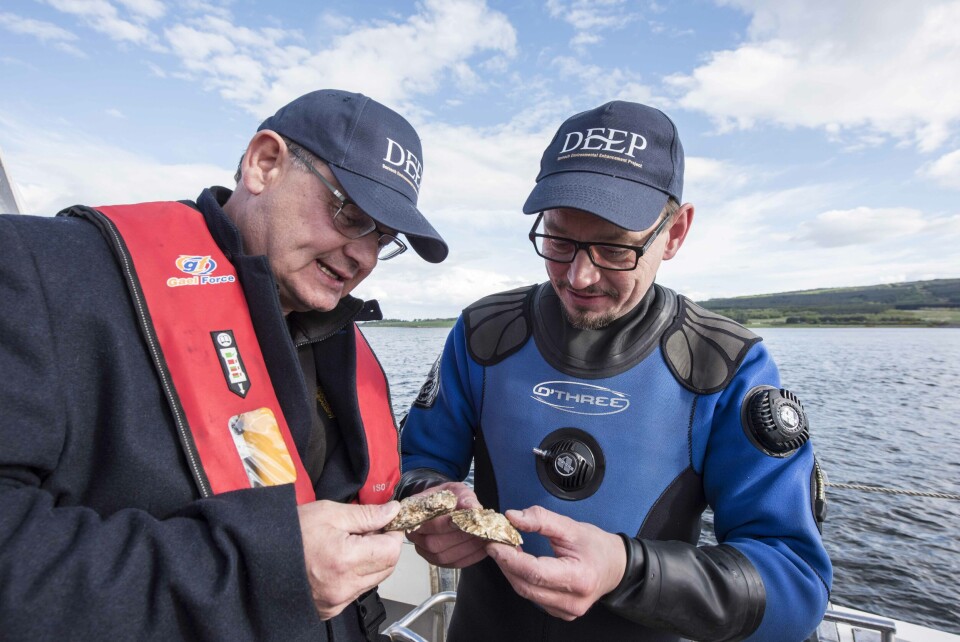
Oyster project ready to go in at the DEEP end
The leaders of a project to restore native oyster beds to the Dornoch Firth are now looking towards the "next step" of putting out more than four million oysters following success in the scheme's first phase.
The Dornoch Environmental Enhancement Project (DEEP) is a collaboration between whisky distillery Glenmorangie, which is situated on the southern bank of the Firth, Heriot-Watt University's Centre of Marine Biodiversity and Biotechnology and the Marine Conservation Society.

Earlier this year Heriot-Watt researchers put out 300 native oysters acquired from the UK’s only sizeable wild oyster population in Loch Ryan in Galloway. Bill Sanderson, Associate Professor of Marine Biodiversity at Heriot-Watt, described the oysters as "canaries in a cage" that were being used to make sure the habitat was still suitable for oysters to grow. Archaeology and research of ancient literature has indicated that oysters grew in the Dornoch Firth for thousands of years until they were fished out in the 1800s.
Tracking survival
Sanderson said: "We looked at all the available data we could lay our hands on from SEPA, etc, and we can’t see any reason why they shouldn’t be able to survive there still.
"Earlier this year we put our ‘canaries in a cage’ out in experimental plots that we got full licensing permission for in the Dornoch, and we have been tracking their survival and growth, which all seems to be going very well.
"Now we’re very much thinking of going to the next step and looking very carefully at how we would restore oysters to the Dornoch in a meaningful population. That, of course, means getting involved with aquaculture partners and growing oysters for a restoration project, which we are looking to get permissions for in the near future.
Aquaculture partners
"We estimate that to do the job properly we would need a minimum of four million oysters.
"We have some aquaculture partners in the project and we have been looking at how we might do that, but we think we have a plan that would achieve that."
DEEP's ‘canaries’ are in fully-retrievable baskets. "Everything comes out at the end of that experiment at the end of next year," said Sanderson. But ultimately, DEEP wants to restore a natural habitat, with the oysters on the floor of the Firth.
"We are very optimistic about taking the project forwards to the next step," he said. "We have done a lot of groundwork in the last two or three years to make sure this is a viable option and we’re very optimistic about it."
Enhance biodiversity
The native oysters going into the Firth are for re-wilding, not for harvesting. The Firth is a Special Area of Conservation and has two nature conservation orders preventing extraction other than mussels.
DEEP last week won the corporate prize in the Nature of Scotland Awards run by wildlife protection charity, the RSPB. As well as restoring oysters to the Firth, the project aims to enhance biodiversity and also act in tandem with an anaerobic digestion plant installed by Glenmorangie to purify by-products created through the distillation process – an environmental first for a distillery.
The re-introduction of the oysters to the Firth earlier this year came as Glenmorangie officially opened its £5 million plant at its distillery at Tain. The plant is expected to purify up to 95 per cent of the waste water that the distillery releases into the Firth, with the remaining 5 per cent naturally cleaned by the oysters.
https://youtu.be/dtfqTqB-IQw























































